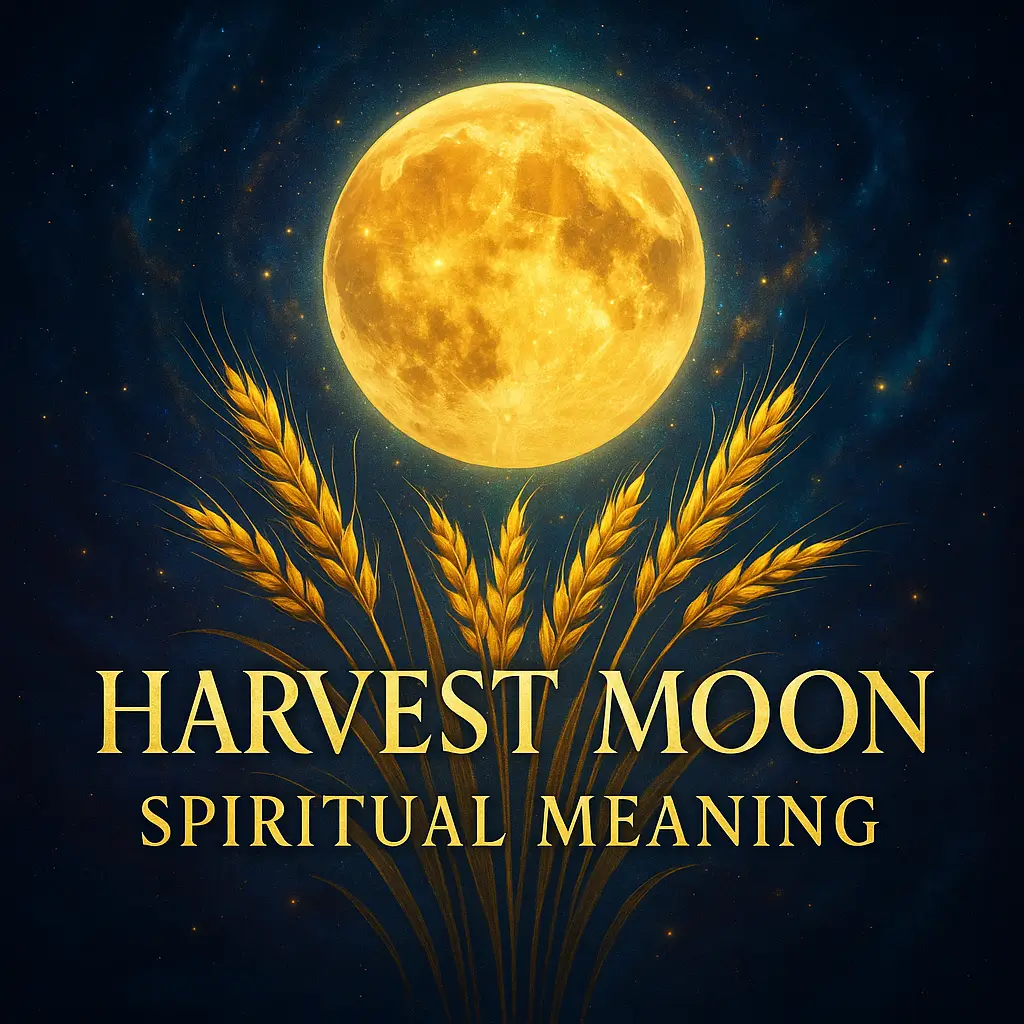Did you know that while humans typically identify 4-5 million colors, eagles can perceive ultraviolet light invisible to our eyes, enabling them to detect the truth of their surroundings with astonishing clarity? This extraordinary vision has made eagles powerful symbols of truth across civilizations—from ancient Egypt where they represented divine sight to Native American traditions where they serve as messengers between humans and the spirit world.
This remarkable ability to see beyond normal perception mirrors our own spiritual journey toward truth. In a world filled with distractions and illusions, animals have long served as our guides to honesty and authenticity, appearing in our dreams, literature, and sacred traditions as reminders of what’s genuine.
The symbolism for truth embodied by various creatures—whether the penetrating gaze of an owl, the unwavering loyalty of a dog, or the transformative wisdom of a snake—offers us profound insights into our own nature. These animal messengers have been encoded with meaning across cultures, each carrying unique lessons about integrity, honesty, and spiritual awakening.
In this exploration, we’ll journey through ancient mythologies, spiritual traditions, and dream interpretations to uncover how these creatures have become powerful ambassadors of truth. You’ll discover which animal allies might be guiding your own path to authenticity, and how their symbolic presence continues to illuminate our collective search for what’s real.
Table of Contents
- 1 Key Takeaways
- 2 Core Symbolism: Animals as Truth-Bearers
- 3 Cultural Truth-Bearers: Animal Symbolism for Truth Across Traditions
- 4 Contemporary Truth Symbolism: Animals in Modern Context
- 5 Frequently Asked Questions
- 5.1 Why are eagles considered symbols of truth across cultures?
- 5.2 What does an owl represent in relation to wisdom and truth?
- 5.3 How do dogs symbolize emotional authenticity and honesty?
- 5.4 What does the snake’s molting represent about truth and transformation?
- 5.5 Which animals does Christianity use to symbolize truth and divine honesty?
- 5.6 How do Native American traditions view the eagle and wolf as truth-bearers?
- 5.7 What role did the dolphin play in ancient Greek symbolism for truth?
- 5.8 How do modern elephants represent truth and collective memory?
- 5.9 What does the whale’s song and communication style represent about truth?
- 5.10 How do honeybees exemplify truth through their waggle dance and collective behavior?
Key Takeaways
- Animals serve as powerful truth-bearers across cultures, embodying honesty through their natural behaviors and characteristics
- Different creatures represent distinct aspects of truth – eagles for clear perspective, owls for hidden wisdom, dogs for emotional authenticity, and snakes for transformative truth
- Cultural traditions feature specific animals as symbols for truth – from the Christian dove to Native American eagles and wolves to Greek owls and dolphins
- Modern symbolism has evolved to include contemporary connections with elephants (memory keepers), whales (deep truth), octopuses (adaptive truth), and honeybees (collective truth)
- The most profound animal symbols remind us that truth requires balanced perception – seeing both beauty and harshness with equal clarity while remaining open to personal interpretation
Core Symbolism: Animals as Truth-Bearers
Symbolism for truth emerges through the natural world in powerful ways, particularly through animals who embody honesty through their very existence. These creatures carry wisdom that transcends human language, speaking to us through their behaviors, characteristics, and spiritual significance across cultures.
The Eagle: Soaring Perspective of Truth
The eagle soars above deception, representing truth through its remarkable vision. With eyesight eight times more powerful than humans, eagles detect movement from over two miles away – a literal manifestation of seeing through illusions to the core reality beneath.
I once stood at the edge of the Grand Canyon, watching an eagle circle effortlessly on thermal currents. Its commanding presence seemed to whisper: truth requires elevation, distance, and perspective. When we rise above emotional entanglements and personal biases, we too can see clearly.
Eagles represent not just the ability to perceive truth, but the courage to face it directly. In Native American traditions, eagle medicine teaches us to embrace honesty with ourselves first – the most challenging yet liberating form of truth-seeking.
As symbols for truth and honesty, eagles appear in everything from national seals to corporate logos because they embody unwavering integrity. Their penetrating gaze misses nothing, reminding us that genuine truth demands we see both beauty and harshness with equal clarity.

The Owl: Wisdom in Shadow
While eagles represent truth in daylight, owls embody truth revealed in darkness. Their exceptional night vision symbolizes the ability to perceive what others miss when obscured by shadow.
The ancient Greeks associated owls with Athena, goddess of wisdom, because they understood that truth often hides in overlooked places. According to research from American Bird Conservancy an owl’s eyes are fixed in their sockets, requiring them to turn their entire head to change perspective – a powerful metaphor for how we must sometimes completely reorient ourselves to grasp deeper truths.
Standing in a forest at twilight, hearing an owl’s call pierce the silence evokes an immediate sense of mystery. This explains why owls frequently represent the symbolism for wisdom that comes through patient observation and deep listening.
The owl teaches us that truth often emerges not through aggressive seeking but through stillness and receptivity. Its silent flight reminds us that the most profound truths often arrive without fanfare, quietly transforming our understanding.
The Dog: Loyal Guardian of Truth
Unlike wild creatures who represent cosmic or spiritual truth, dogs embody practical, everyday honesty. Their transparent emotions and inability to conceal their authentic nature have made them symbols for truth and honesty across cultures.
“Dogs never lie about love,” poet Jeffrey McDaniel famously observed – capturing why these companions symbolize emotional authenticity. When a dog greets you with unbridled joy or cowers in fear, there is no deception, only raw truth.
In ancient Egyptian mythology, Anubis – the dog-headed god – guided souls through judgment, weighing their hearts against the feather of Ma’at (truth). This symbol of purity and truth suggests dogs see past our pretenses to our essential nature.
I remember watching my childhood dog react instinctively to visitors – wagging happily at some while growling cautiously at others. Years later, those she distrusted invariably proved themselves untrustworthy. Dogs remind us that truth isn’t always intellectual – sometimes it’s instinctual, felt rather than reasoned.
The Snake: Truth Through Transformation
Perhaps no creature better represents the complexity of truth than the snake. Often feared, snakes symbolize the challenging aspects of honesty – those truths that require us to shed old skins of understanding.
The snake’s periodic molting represents growth through releasing falsehoods. Each transformation reveals a more authentic self beneath, teaching us that truth is not static but evolving. What was true yesterday may not be tomorrow as we grow in understanding.
In medical symbols like the caduceus, intertwined snakes represent healing through balance – reminding us that wholeness comes through integrating opposing truths rather than clinging to comfortable half-truths.
Symbolism for honesty sometimes requires embracing contradictions, just as the snake contains both venom and medicine, destruction and renewal. This duality teaches us that authentic truth rarely fits into simple categories of good and bad.
Cultural Truth-Bearers: Animal Symbolism for Truth Across Traditions
Throughout history, humans have looked to the animal kingdom for guidance on abstract concepts like truth. Different cultures have developed rich traditions around specific creatures they believe embody honesty and authenticity. These symbolic relationships offer us profound insights into how various societies conceptualized truth and its messengers.
Christianity’s Truth Symbols in Animal Form
In Christian symbolism for truth, the dove stands paramount. With its pure white plumage and gentle nature, the dove represents the Holy Spirit’s truth-bringing function. When the dove descended upon Jesus during his baptism, it symbolized divine confirmation of truth. Churches worldwide incorporate dove imagery in stained glass and architecture to represent this connection between heaven’s honest message and earthly understanding.
The lamb also holds special significance as a symbol for truth and honesty in Christian tradition. Its innocence and purity mirror Christ’s sinless nature, making it the perfect representation of unadulterated truth. As Jesus is called “the Lamb of God” and “the Way, the Truth, and the Life,” this connection strengthens the lamb’s association with divine honesty.

Less frequently discussed is the fish as a truth symbol. Early Christians used the fish (ichthys) as a secret symbol during persecution. This symbol represented not only faith but commitment to living in truth despite dangerous consequences, showing how truth often requires courage and conviction.
Native American Truth-Bearers and Wisdom Keepers
Among many Native American traditions, animals serve as central symbols for truth and honesty in both spiritual teachings and daily life. The eagle’s significance transcends mere representation – it embodies the highest spiritual truth. According to the Lakota tradition, the eagle feather carries prayers directly to the Creator because the eagle flies higher than any other bird, closest to truth’s source.
The wolf teaches truth through pack dynamics. Studies from the Wolf Conservation Center reveal that wolf packs function through honest communication and authentic leadership. Native traditions recognized this, seeing wolves as teachers of community truth – showing how honesty sustains relationships and ensures group survival.
Bears occupy another crucial position in Native American symbolism for wisdom and introspective truth. Their hibernation represents the journey inward to discover personal truths, while their emergence symbolizes bringing those truths back to the community after deep reflection.
Greek Symbolism for Truth: Divine Messengers
Ancient Greek culture developed sophisticated animal symbolism around truth concepts. The owl’s association with Athena, goddess of wisdom, established it as a powerful truth symbol. Coins from Athens featured Athena’s owl, making it perhaps the earliest currency to bear animal symbolism for truth. Archaeological evidence shows these owl coins circulated widely, spreading this symbolic association throughout the ancient world.
The dolphin held special meaning for Greeks as a symbol of Apollo – god of truth and prophecy. Sailors believed dolphin encounters brought messages from the divine realm. This connection between dolphins and oracular truth appears in numerous Greek myths, including stories of dolphins guiding ships to Delphi, the sacred site of Apollo’s truth-telling oracle.

Greek mythology also features the phoenix as a symbol of purity and truth through renewal. Unlike the snake that sheds its skin, the phoenix’s complete rebirth through fire represents the purification process that truth sometimes demands—the willingness to be utterly transformed by facing reality.
Eastern Traditions: Truth Through Paradox
In Japanese tradition, cranes symbolize truth through longevity and fidelity. Their monogamous nature represents unwavering honesty in relationships. The Japanese tradition of folding one thousand paper cranes stems partly from this association with honest intention and true commitment.
Chinese symbolism features the dragon as a complex truth-bearer. Unlike Western dragons that often represent deception, Eastern dragons symbolize celestial wisdom and divine truth. Their ability to move between water, land, and sky represents truth’s fluidity across different realms of understanding.
Perhaps most fascinating is the fox (kitsune) in Japanese folklore. This creature embodies truth’s paradoxical nature—foxes are both tricksters and truth-revealers, showing how deception sometimes leads to deeper honesty. The fox teaches that truth isn’t always straightforward; sometimes it requires seeing through illusion to reach genuine understanding.
When we explore these diverse symbolism for honesty traditions, we discover how human cultures universally valued truth while expressing it through different animal messengers. This rich symbolic language continues to speak to us today, offering wisdom across cultural and temporal boundaries.
Have you ever noticed which animal consistently appears in your life during moments of important truth-seeking? The answer might reveal your personal truth-bearer.
Contemporary Truth Symbolism: Animals in Modern Context
While ancient traditions established core animal symbolism for truth, our relationship with these creatures continues to evolve in contemporary society. Today’s understanding of animal behavior, combined with scientific research, has deepened our appreciation for these living symbols and their connection to honesty and authenticity.
The Elephant: Memory Keeper of Truth
Elephants have emerged as powerful symbols for honesty in modern conservation discourse. Their remarkable memory—storing information for decades—represents truth’s persistence against forces that would erase it. When elephants return to ancestral migration routes despite human development, they demonstrate how authentic truth transcends temporary obstacles.
Research from the National Geographic reveals these animals possess extraordinary empathic abilities, recognizing distress in others and offering comfort. This natural emotional authenticity makes elephants embodiments of social truth—the honest recognition and response to others’ genuine needs without pretense.
Walking alongside an elephant at a sanctuary in Thailand, I witnessed firsthand their gentle power and quiet dignity. Elephants teach us that truth isn’t merely about facts but about integrating memory, wisdom, and compassion into a coherent whole. Their matriarchal societies, led by experienced females, remind us that truth flourishes when we honor those with lived experience.

The Whale: Deep Truth-Keepers
Whales carry perhaps the most profound symbolism for truth among modern marine creatures. Their songs travel hundreds of miles through ocean depths, representing truth’s capacity to transcend barriers and connect distant realities. Scientists have discovered whale songs evolve and change collectively over time, suggesting truth itself isn’t static but evolves through communal wisdom.
The blue whale—Earth’s largest creature—embodies truth’s immensity. Its heart alone weighs 400 pounds, pumping blood through a being of extraordinary proportion. When we contemplate these gentle giants, we’re reminded that truth must be proportionate to reality’s vastness—simple explanations rarely capture complex realities.
Marine biologists studying whale behaviors note their sophisticated social bonds and intergenerational teaching—calves learn migration routes and feeding grounds from elders. This transmission of vital knowledge mirrors how human societies preserve essential truths across generations, adapting them to changing circumstances while maintaining core integrity.
The Octopus: Fluid Truth and Intelligent Adaptation
Perhaps no creature better represents the complexity of modern truth than the octopus. These remarkably intelligent invertebrates challenge our understanding of consciousness itself. Their distributed nervous system—with two-thirds of their neurons located in their arms—represents how truth often exists beyond centralized authority, flourishing instead in diverse perspectives.
Octopuses change color and texture to match their surroundings, not as deception but as adaptation. This remarkable ability symbolizes how truth sometimes requires different expressions in various contexts without losing its essence. Their problem-solving abilities—opening jars, navigating mazes, using tools—demonstrate that discovering truth often demands creative approaches rather than rigid methodologies.
As symbols of wisdom in fluid environments, octopuses teach us to question assumptions about where knowledge resides. Their short lifespan—typically just 1-2 years—reminds us that profound truth can emerge even within brief existence, challenging our association of wisdom exclusively with longevity.
The Honeybee: Collective Truth Through Communication
Honeybees represent truth’s collaborative nature in modern environmental discussions. Their waggle dance—an extraordinary form of communication where bees share precise information about nectar sources—symbolizes how truth prospers through honest exchange. Each bee contributes their personal discovery to the hive’s collective knowledge, creating a truth greater than any individual could possess.

Bees produce honey—a symbol of purity and sweetness—through careful transformation of raw materials. This process mirrors how raw experience becomes wisdom through reflection and integration. Their hive structures, mathematically precise hexagons that maximize efficiency, demonstrate how truth often manifests in elegant, harmonious patterns when we observe closely.
The bee’s relationship with flowers represents truth’s reciprocal nature—both parties benefit from honest exchange. In collecting nectar, bees simultaneously pollinate plants, creating an ecological relationship that sustains both. Similarly, human truth flourishes best in relationships of mutual benefit and integrity rather than exploitation.
As we navigate an increasingly complex world, these animal symbols for truth offer timeless wisdom in contemporary packaging. They remind us that honesty isn’t merely an abstract virtue but a living force expressed through relationship, adaptation, and communion with the natural world.
Frequently Asked Questions
Why are eagles considered symbols of truth across cultures?
Eagles symbolize truth through their extraordinary vision—eight times more powerful than humans—enabling them to detect reality from great distances. Their ability to see ultraviolet light and perceive hidden details represents penetrating clarity. Native American and ancient Egyptian traditions valued eagles as messengers of divine truth, emphasizing how truth requires elevated perspective and courage to face reality directly.
What does an owl represent in relation to wisdom and truth?
Owls embody truth hidden in darkness, symbolizing wisdom that emerges through patient observation and deep listening. Ancient Greeks associated owls with Athena, goddess of wisdom, because they perceive what others miss when obscured by shadow. Their fixed eyes requiring complete head rotation metaphorically represents how we must reorient ourselves to grasp deeper truths beyond surface appearances.
How do dogs symbolize emotional authenticity and honesty?
Dogs embody practical, everyday honesty through their transparent emotions and inability to conceal authentic feelings. Their unbridled joy or genuine fear represent raw truth without deception. In Egyptian mythology, Anubis—the dog-headed god—guided souls through judgment, symbolizing how dogs instinctively perceive essential nature beyond human pretense and social masks.
What does the snake’s molting represent about truth and transformation?
The snake’s periodic molting symbolizes growth through releasing falsehoods and outdated understanding. Each shedding reveals a more authentic self beneath, representing that truth isn’t static but evolving. In medical symbolism like the caduceus, intertwined snakes represent healing through balancing opposing truths, teaching that wholeness requires integrating contradictions rather than clinging to comfortable half-truths.
Which animals does Christianity use to symbolize truth and divine honesty?
Christianity primarily uses the dove as truth’s symbol, representing the Holy Spirit’s truth-bringing function. The lamb signifies innocence and purity, mirroring Christ’s sinless nature. The fish (ichthys) represents commitment to living truthfully despite dangerous consequences. These symbols collectively convey divine honesty, sacrificial purity, and courageous conviction in maintaining truth.
How do Native American traditions view the eagle and wolf as truth-bearers?
In Native American spirituality, eagles embody the highest spiritual truth, with feathers carrying prayers directly to the Creator because they fly closest to truth’s source. Wolves teach truth through honest pack communication and authentic leadership; their survival depends on truthful interaction. Bears represent introspective truth discovered through hibernation’s inward journey, then brought back to community.
What role did the dolphin play in ancient Greek symbolism for truth?
Ancient Greeks associated dolphins with Apollo, god of truth and prophecy. Sailors believed dolphin encounters brought divine messages, and dolphins appeared in myths guiding ships to Delphi—Apollo’s oracle of truth-telling. This connection symbolized how truth flows from divine sources, with dolphins serving as intermediaries between human and celestial realms communicating eternal wisdom.
How do modern elephants represent truth and collective memory?
Elephants symbolize truth’s persistence through their remarkable decades-long memory, representing how authentic wisdom transcends temporary obstacles. Their extraordinary empathic abilities reflect honest emotional recognition and response to genuine needs. Matriarchal societies led by experienced females demonstrate that truth flourishes when honoring lived experience and intergenerational wisdom transmission.
What does the whale’s song and communication style represent about truth?
Whale songs traveling hundreds of miles through ocean depths symbolize truth’s capacity to transcend barriers and connect distant realities. Evolving songs suggest truth itself progresses through collective wisdom. The blue whale’s immensity represents truth proportionate to reality’s vastness, reminding us that simple explanations rarely capture complex truths, and vast understanding requires proportionate contemplation.
How do honeybees exemplify truth through their waggle dance and collective behavior?
Honeybees represent truth’s collaborative nature through their waggle dance—precise communication sharing nectar discoveries. Each bee contributes personal discoveries to collective knowledge, creating truth greater than individuals possess. Hexagonal hives demonstrate how truth manifests in elegant, harmonious patterns, while pollination symbolizes truth’s reciprocal nature—mutual benefit requires honest exchange and integrity.



